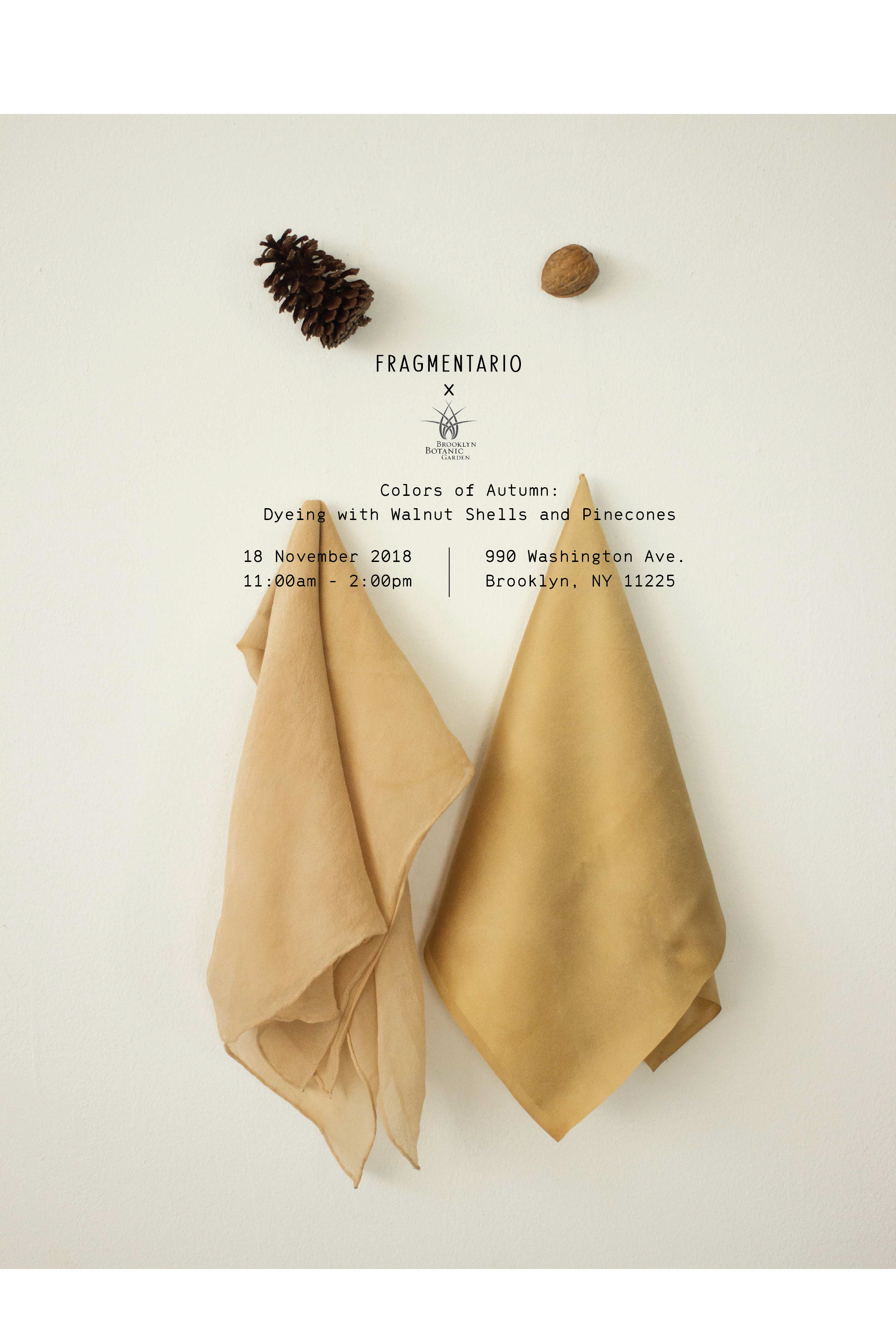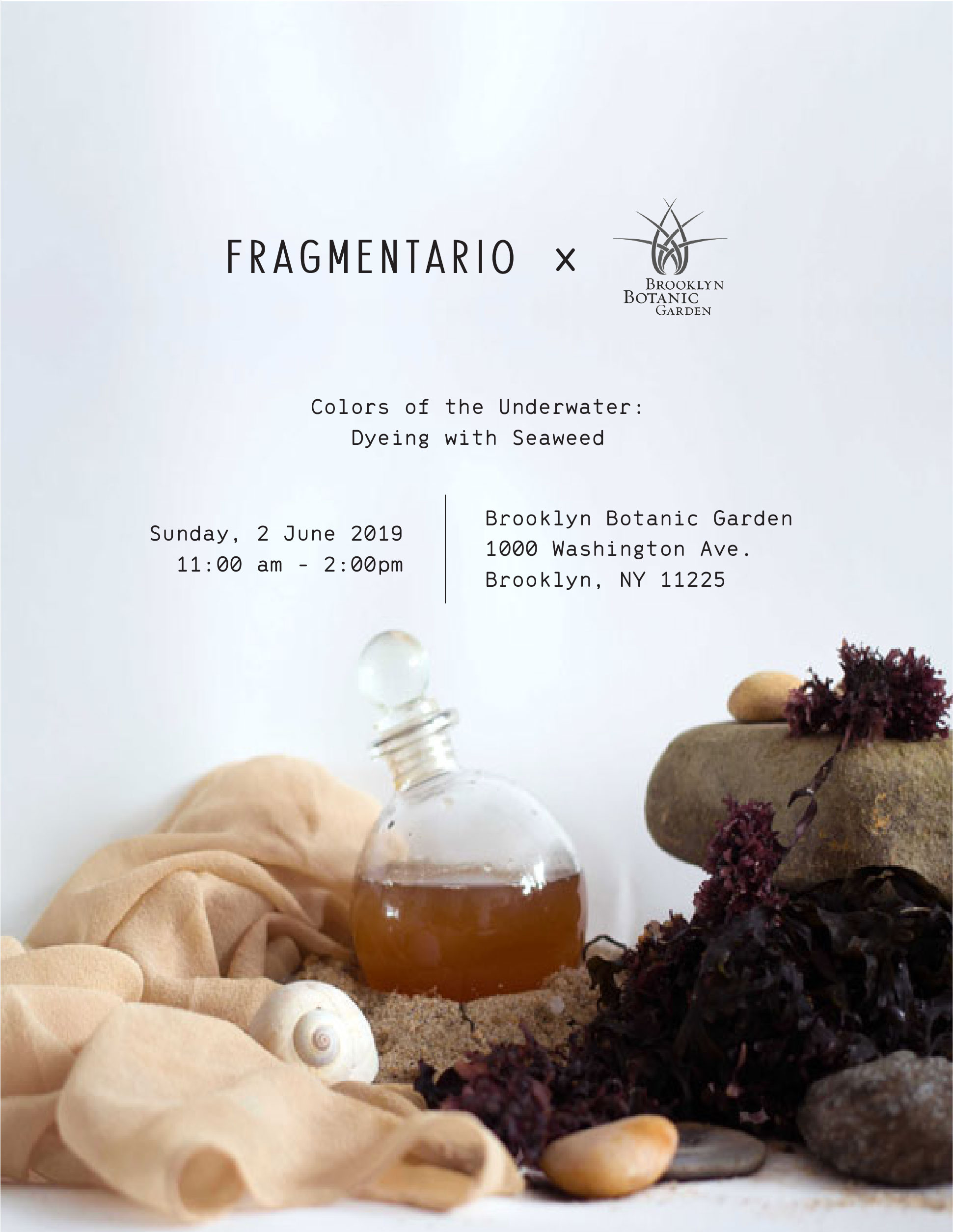Brooklyn Botanical Garden
︎ 2017 - Ongoing (USA)
Exploring the stories behind plants with color properties, such as:
- The role spices took in the arrival of Europe to America (the continent, not the country)
- How color once indicated locality
- The role of natural color sources in the colonization of the Americas
- The role spices took in the arrival of Europe to America (the continent, not the country)
- How color once indicated locality
- The role of natural color sources in the colonization of the Americas






Spices of the New & Old World: Dyeing with Turmeric and Annatto
Among the most sought after and expensive commodities in the Middle Ages, spices are known and valued for their flavor and medicinal properties, and some, like turmeric and annatto, for the colors they impart.
In this class we used turmeric root to make golden hues and annatto seeds to create amber tones.
Each participant received two silk scarves to dye during the workshop and a natural dyes zine.
Among the most sought after and expensive commodities in the Middle Ages, spices are known and valued for their flavor and medicinal properties, and some, like turmeric and annatto, for the colors they impart.
In this class we used turmeric root to make golden hues and annatto seeds to create amber tones.
Each participant received two silk scarves to dye during the workshop and a natural dyes zine.




Colors of Autumn: Dyeing with Walnut Shells & Pinecones
Before the discovery of synthetic dyes, plants and other natural sources were used by all cultures to color fiber. Discover the history and basics of dyeing with plants by using walnut shells and pinecones to create a range of tan and brown hues. Each participant will receive two silk scarves to dye during the workshop and a natural dyes zine.
Before the discovery of synthetic dyes, plants and other natural sources were used by all cultures to color fiber. Discover the history and basics of dyeing with plants by using walnut shells and pinecones to create a range of tan and brown hues. Each participant will receive two silk scarves to dye during the workshop and a natural dyes zine.

From Green to Blue: Dyeing with Indigo
Indigo leaves have long been used to dye fiber a vibrant blue. Learn how to create an indigo dye vat from scratch, as well as the history and basics of dyeing with natural sources. Each participant will receive two silk scarves to dye during the workshop, a natural dyes zine, and an indigo dye zine.
Indigo leaves have long been used to dye fiber a vibrant blue. Learn how to create an indigo dye vat from scratch, as well as the history and basics of dyeing with natural sources. Each participant will receive two silk scarves to dye during the workshop, a natural dyes zine, and an indigo dye zine.

Royal Hues: Dyeing with Cochineal & Logwood
In times past, among the most valuable commodities of the Americas were the vivid red and purple natural dyes produced by the cochineal insect and the logwood tree. Experiment with both to create your own royal hues as you learn about the history and basics of dyeing with natural sources. Each participant will receive two silk scarves to dye during the workshop and a natural dyes zine.
In times past, among the most valuable commodities of the Americas were the vivid red and purple natural dyes produced by the cochineal insect and the logwood tree. Experiment with both to create your own royal hues as you learn about the history and basics of dyeing with natural sources. Each participant will receive two silk scarves to dye during the workshop and a natural dyes zine.

Experimental Avocado Dyeing
Discover the secret and diverse color properties of avocado seeds by experimenting with lime and baking soda—easily found modifiers that alter the pink avocado hue toward yellow and more saturated tones respectively. Each participant will receive three silk bandanas to dye with the three mixes, along with a natural dyes zine.
Discover the secret and diverse color properties of avocado seeds by experimenting with lime and baking soda—easily found modifiers that alter the pink avocado hue toward yellow and more saturated tones respectively. Each participant will receive three silk bandanas to dye with the three mixes, along with a natural dyes zine.

Colors of the Underwater: Dyeing with Seaweed
Just like their non-aquatic botanical counterparts, marine species have diverse color properties. Discover the history and basics of dyeing with algae by using local seaweed. Each participant will receive one large silk scarf to dye during the workshop and a natural dyes zine.
Just like their non-aquatic botanical counterparts, marine species have diverse color properties. Discover the history and basics of dyeing with algae by using local seaweed. Each participant will receive one large silk scarf to dye during the workshop and a natural dyes zine.
